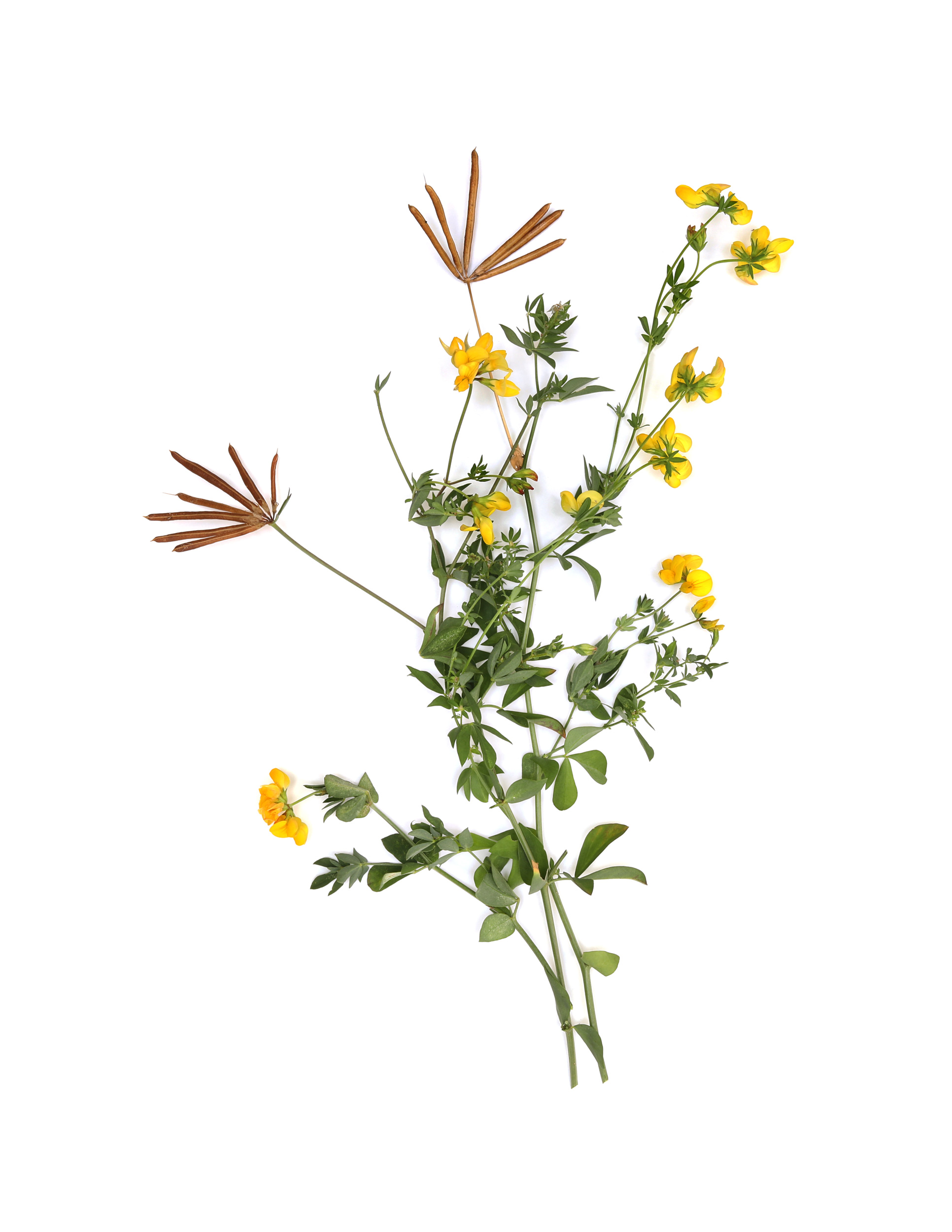
mystery solved
i have never known why this pervasive little yellow-flowered roadside weed is called bird’s foot trefoil. trefoil means three-leaves, and indeed if you look closely, the leaves are tri-lobed. so, trefoil makes sense. but i have never understood the bird’s foot nomenclature for what i assumed was a description of those diminutive yellow pea-like flowers. today, i learned from whence the name comes: the seeds! i have seen and admired a lot of bird’s foot trefoil over the years (i love how it brightens our roadsides for a month every summer), but i have never noticed the seeds; not at any time in my 59 years. right now, bird’s foot trefoil is lining every single road i drive during my weekly routines. that is whole lot of trefoil! i have no idea why today i finally noticed the bird’s feet. better late than never. truly.
bird’s foot trefoil (Lotus corniculatus)
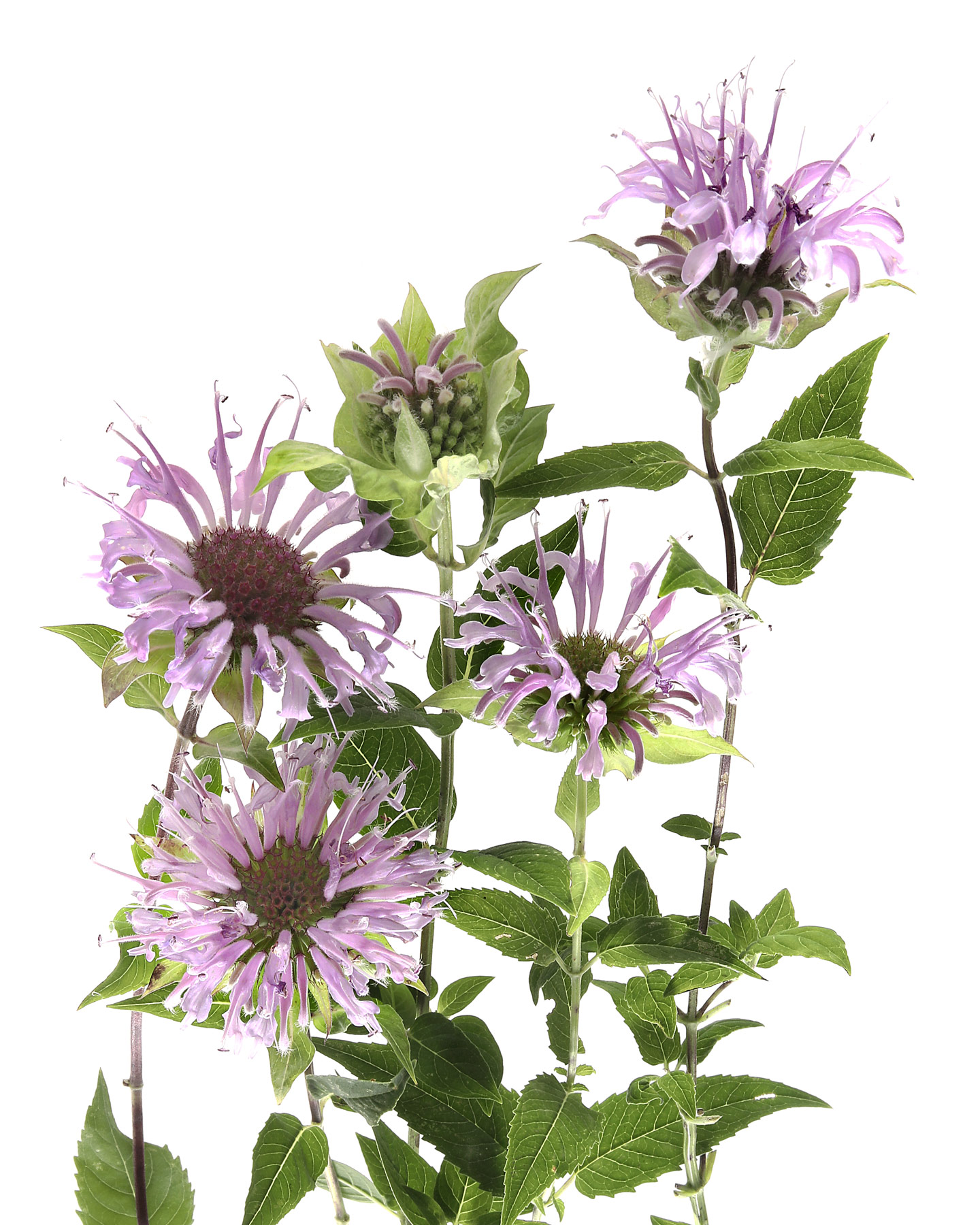
a balm for the bees
i had a hard time picking these today to photograph. they were loaded with bees. my only solace was that there was A LOT of it. i appreciate these flowers most when they are in their just-barely-blooming jester hat phase, more than when they are in their fully open tonsured-monk phase. either way, i am grateful for their presence–a candy store for honey bees.
wild bergamot, wild bee balm (Monarda fistulosa)
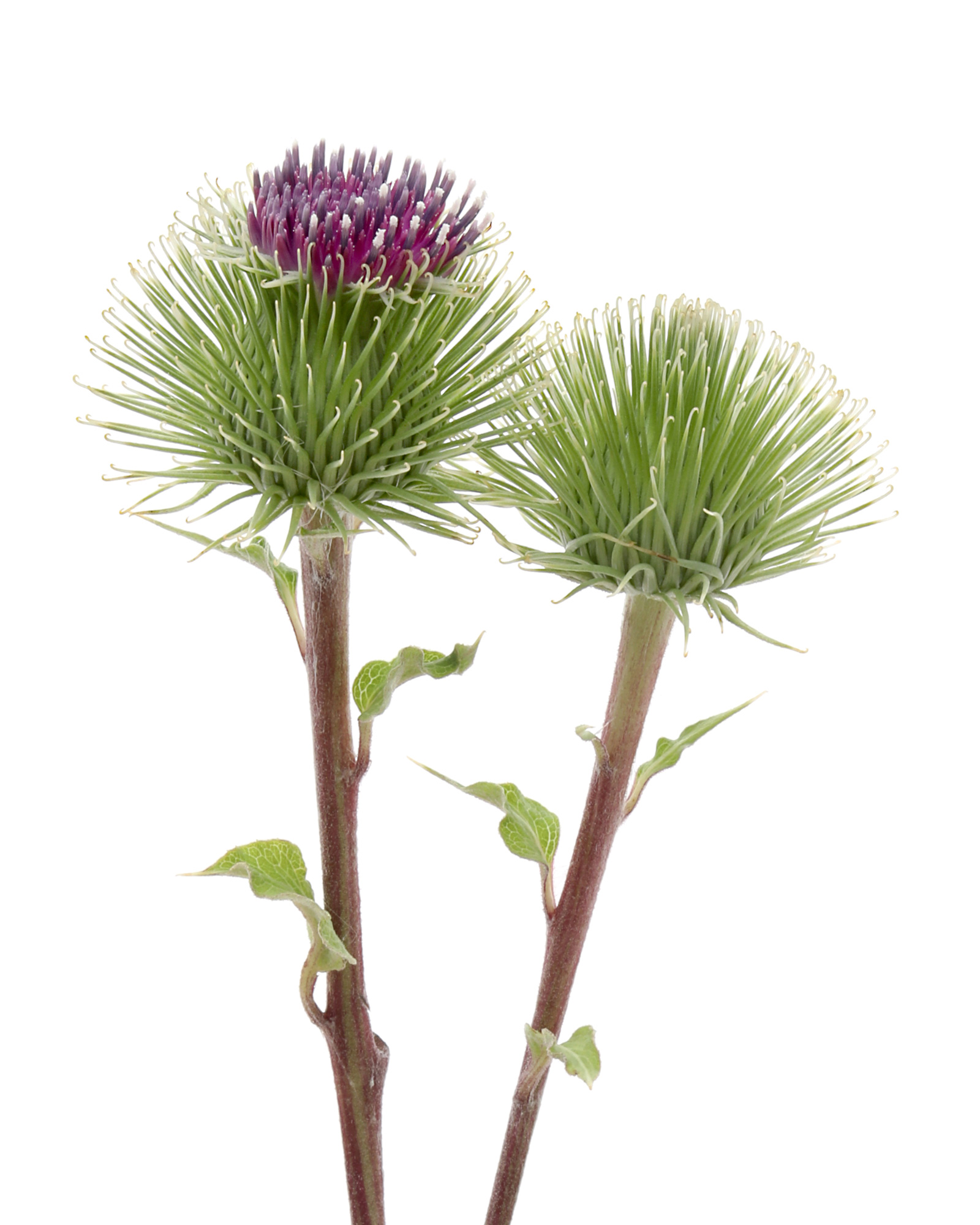
a weed is any plant growing where it is not wanted
do you know burdock? can you recognize it in summer and winter? if not, may i suggest you make it’s acquaintance. it’s a remarkable plant, and worth knowing in my humble opinion. you probably know it, but perhaps only in it’s winter (burr) form. see, even that is remarkable. how many plants do you know better in their dead winter form than summer? Here are few fun facts:
- burdock provides essential pollen and nectar for honeybees around August, when clover is on the wane and before the goldenrod starts to bloom.
- its clinging properties, in addition to providing an excellent mechanism for seed dispersal, led to the invention of the hook and loop fastener (aka velcro).
- the taproot of young burdock plants can be harvested and eaten as a root vegetable, and is popular in East Asian cuisine.
- immature flower stalks may also be harvested in late spring, before flowers appear; their taste resembles that of artichoke, to which the burdock is related.
- dandelion and burdock is today a soft drink that has long been popular in the United Kingdom, which has its origins in hedgerow mead.
- burdock is a traditional medicinal herb used for many ailments.
- in Turkish Anatolia, the burdock plant was believed to ward off the evil eye, and as such is often a motif appearing woven into kilims for protection.
burdock flowers (Arctium)
-
Thanks for taking the dive down the rabbit hole for us, as you frequently do! I knew the Velcro fact, but not the rest.
reply
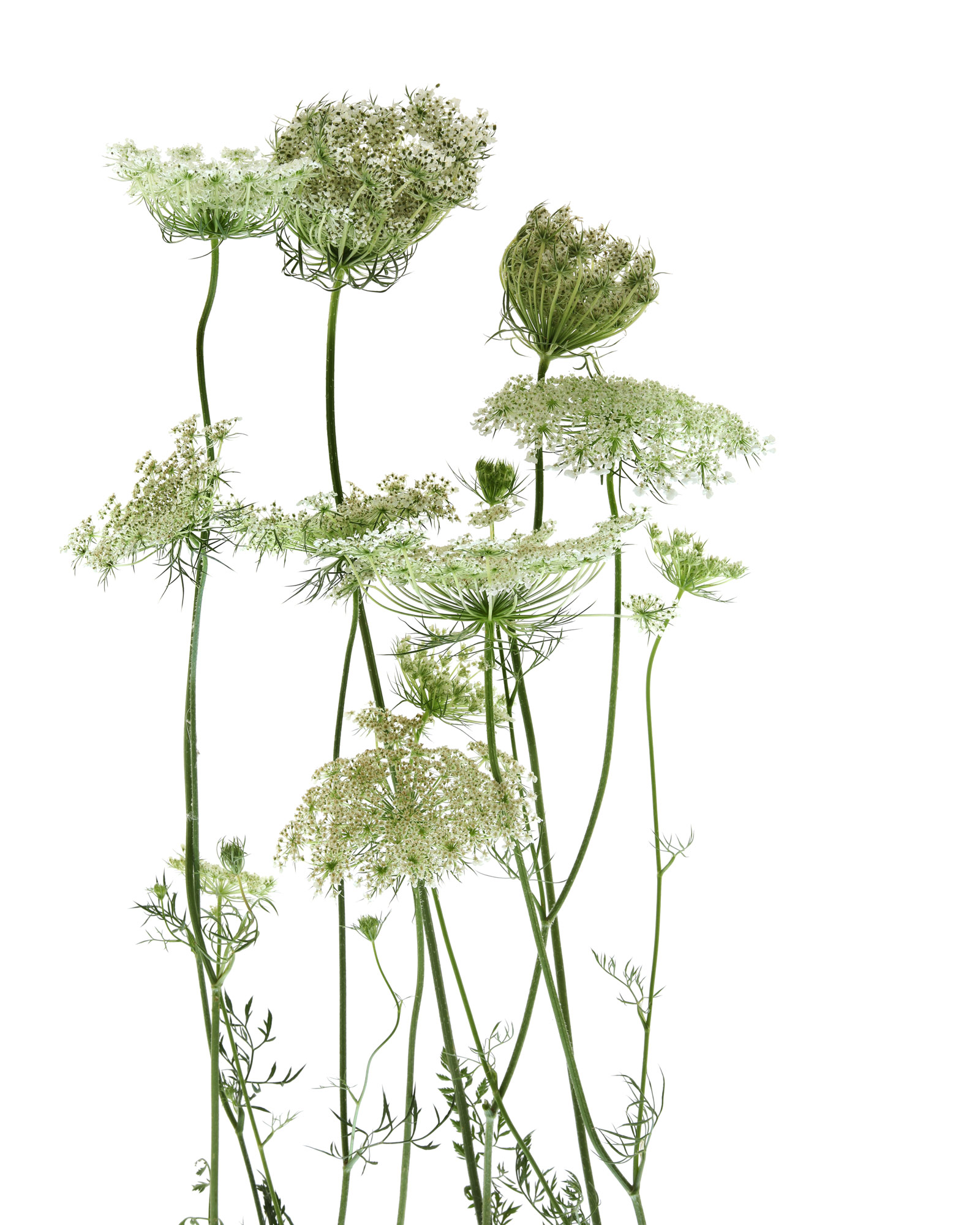
(umbellifer) family photo
daucus carota goes by several names: wild carrot, bird’s nest, bishop’s lace, and here in north america, queen anne’s lace. they are one of my july highlights. i got a little antsy this year and started looking for them in june, wondering if the drought had affected them. turns out, i had my mental calendar wrong. i just looked back on several years of STIIL, and it looks like mid-to-late-july is the usual time for our annual visit from the queen. whew.
queen anne’s lace (Daucus carota)
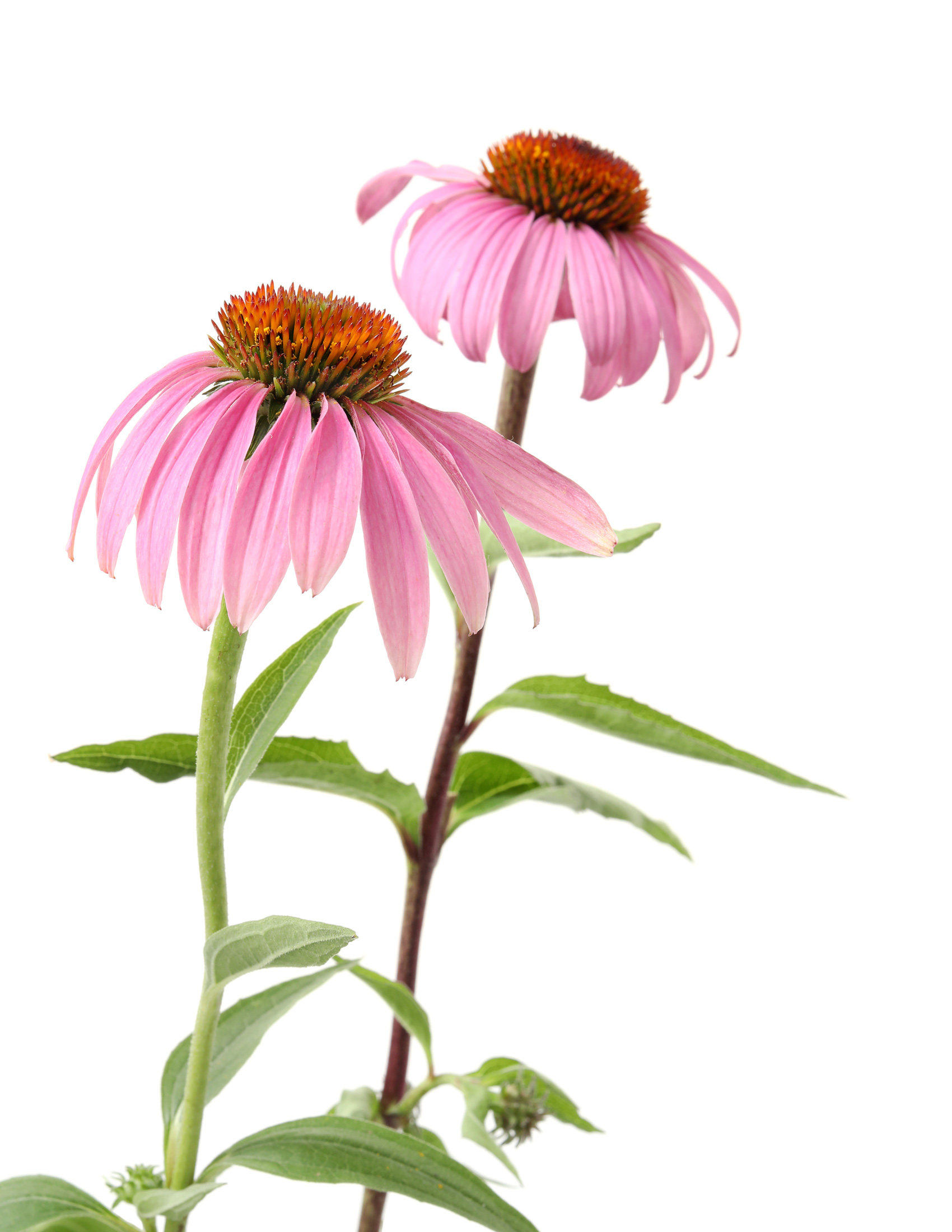
the more you know, the more you fall in love
did you know that name echinacea is derived from the greek word ἐχῖνος (ekhinos), meaning “hedgehog”, due to the spiny central disk. i love knowing trivia like this. there are nine distinct species of coneflower, all native to eastern and central north america. pollinators love them. birds love their seeds. gardeners love their showy flowers. and i love them for their name–hedgehog coneflowers.
eastern purple coneflower (Echinacea purpurea)



This is a stunningly beautiful photograph